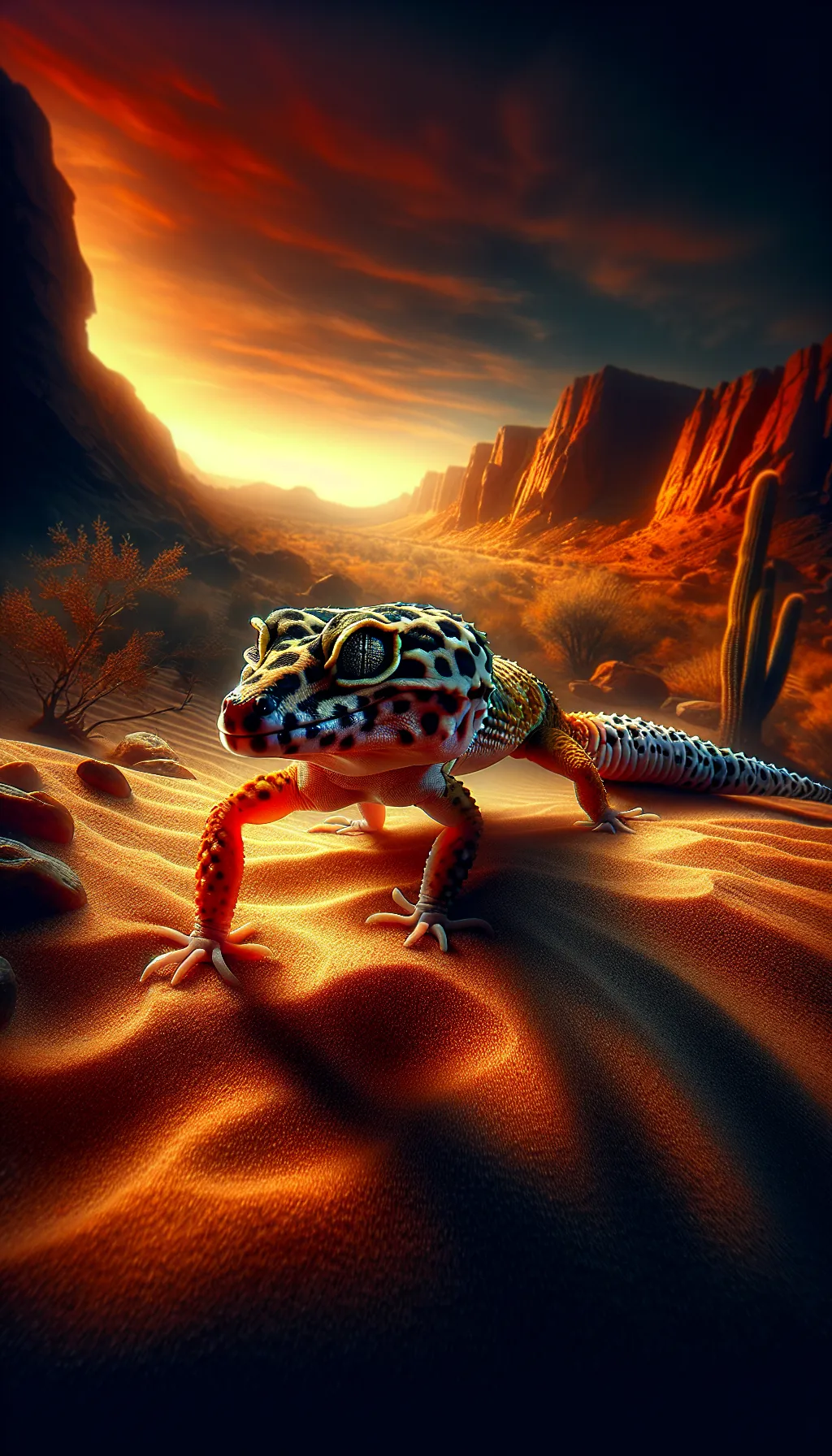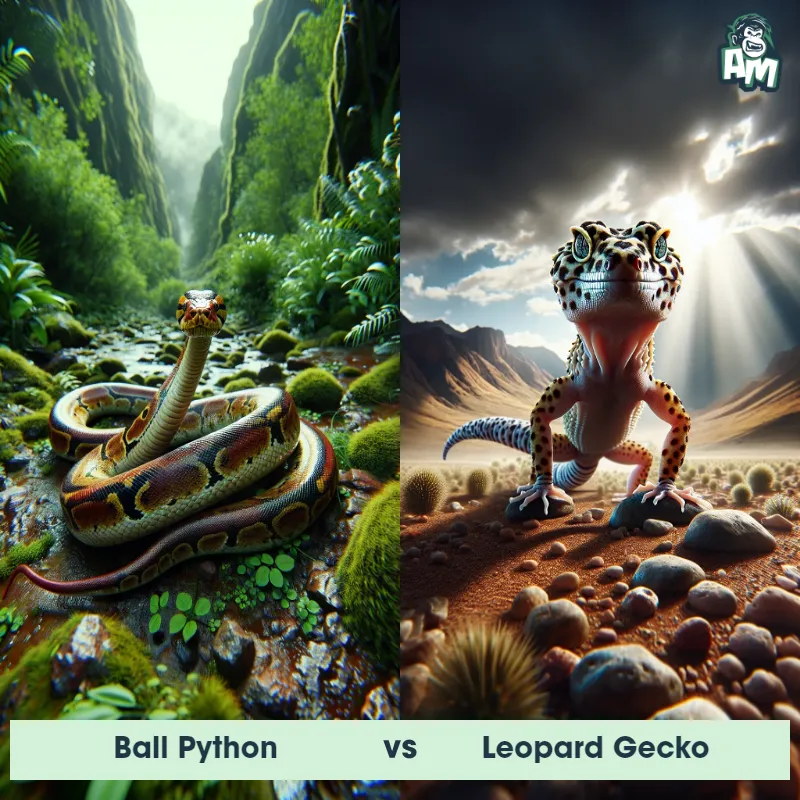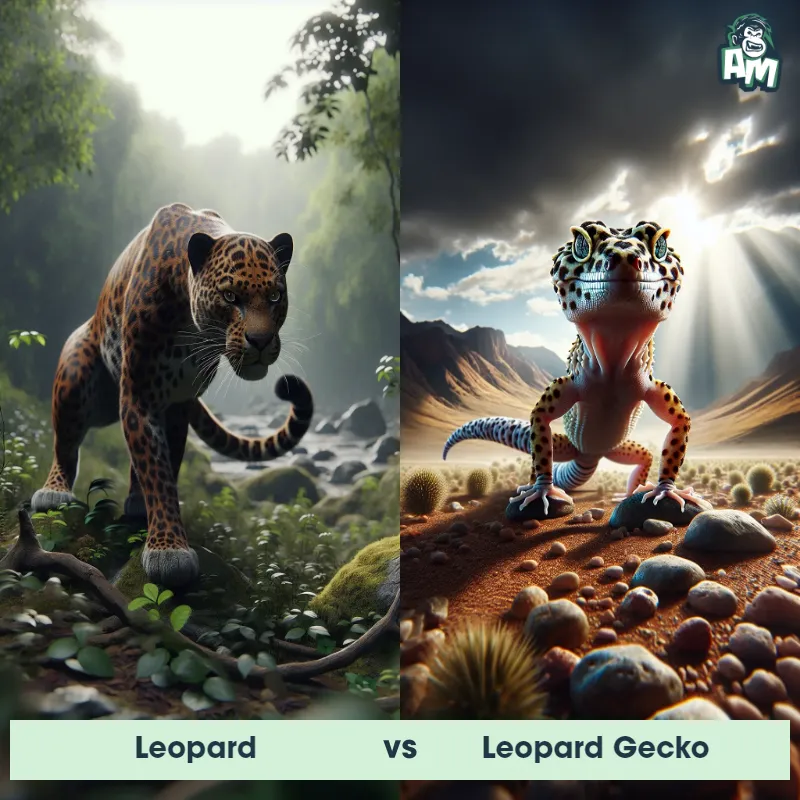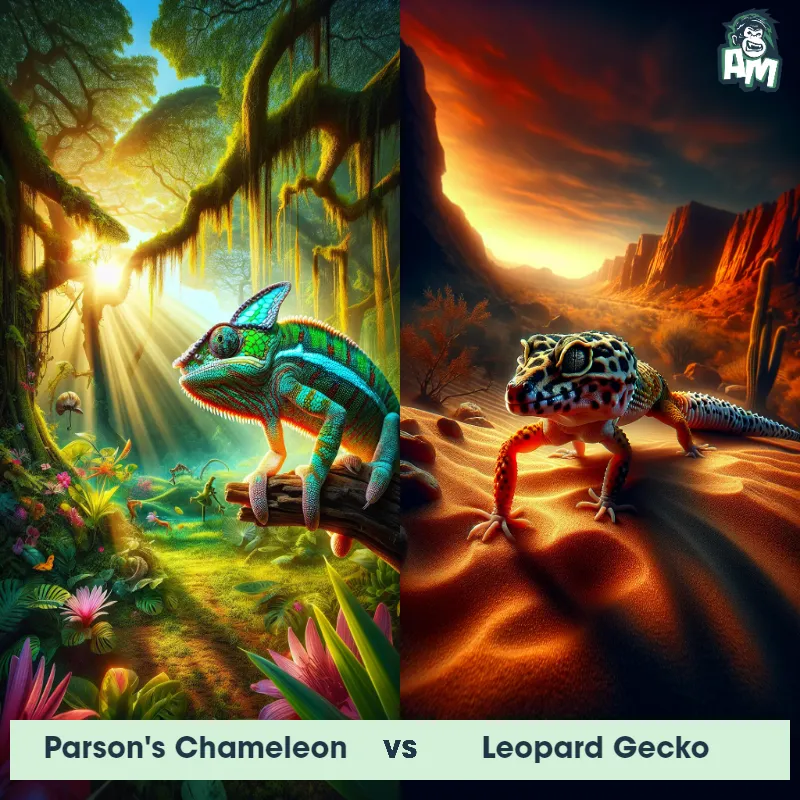The Leopard Gecko
The Leopard Gecko, a nocturnal lizard species native to the deserts of Pakistan, Afghanistan, and India, is known for its distinct appearance with a spotted and mottled body that resembles a leopard's coat. These geckos have unique eyelids and movable eyelids, along with prominent eyes and a thick tail that stores fat reserves. They are popular as pets due to their docile nature and easy-to-care-for habitat requirements.

| Leopard Gecko | |
|---|---|
| Size | 6-10 inches (15-25 cm) |
| Weight | 45-90 grams (1.5-3.2 oz) |
| Speed | 8-10mph (13-16km/h) |
| Key Strength | Agility |
| Biggest Weakness | Size |
| Scientific Name | Eublepharis macularius |
| Family | Eublepharidae |
| Habitat | Warm, dry environments such as deserts |
| Geography | Native to Afghanistan, Pakistan, India, and Iran |
| Diet | Mainly insects such as crickets and mealworms |
| Lifespan | 8 years - 10 years |

The Leopard Gecko
The Leopard Gecko, a nocturnal lizard species native to the deserts of Pakistan, Afghanistan, and India, is known for its distinct appearance with a spotted and mottled body that resembles a leopard's coat. These geckos have unique eyelids and movable eyelids, along with prominent eyes and a thick tail that stores fat reserves. They are popular as pets due to their docile nature and easy-to-care-for habitat requirements.
Fun Fact: Leopard Geckos are able to detach their tails when threatened by predators, a defense mechanism known as autotomy.
| Leopard Gecko | |
|---|---|
| Size | 6-10 inches (15-25 cm) |
| Weight | 45-90 grams (1.5-3.2 oz) |
| Speed | 8-10mph (13-16km/h) |
| Key Strength | Agility |
| Biggest Weakness | Size |
| Scientific Name | Eublepharis macularius |
| Family | Eublepharidae |
| Habitat | Warm, dry environments such as deserts |
| Geography | Native to Afghanistan, Pakistan, India, and Iran |
| Diet | Mainly insects such as crickets and mealworms |
| Lifespan | 8 years - 10 years |
Leopard Gecko Matchups
We use AI to simulate matchups between the Leopard Gecko and other animals. Our simulation considers size, strength, and natural predatory behaviors to determine the most likely outcome.

Can't find the Matchup you want?
Create Your Own MatchupLeopard Gecko: Diet, Predators, Aggression, and Defensive Behaviors
What do Leopard Geckos eat?
Leopard Geckos are insectivores, meaning they primarily eat insects. Some common foods in their diet include crickets, mealworms, waxworms, and roaches. It's important to provide a varied diet to ensure they receive all the necessary nutrients.
Do Leopard Geckos have any predators?
In the wild, Leopard Geckos face threats from predators such as snakes, birds of prey, and larger mammals. However, in captivity, they are typically safe from predators as long as they are housed in a secure enclosure.
Are Leopard Geckos aggressive?
Leopard Geckos are known for their docile and gentle nature, making them popular pets for beginners. They are not typically aggressive towards humans or other geckos, but individual personalities can vary.
Do Leopard Geckos fight?
Leopard Geckos may engage in minor conflicts, especially during mating season when males may become territorial. However, these fights are usually not aggressive and do not result in serious injury.
How do Leopard Geckos defend themselves?
When threatened, Leopard Geckos have several defense mechanisms they can use. They may drop their tail as a distraction to escape from predators, a process known as autotomy. Their skin may also change color to blend in with their environment, providing camouflage from threats.
What is the biggest weakness of Leopard Geckos in a fight?
One of the biggest weaknesses of Leopard Geckos in a fight is their relatively small size compared to some potential predators. While they have defense mechanisms like dropping their tail and changing color, their small stature makes them vulnerable to larger predators if they are unable to escape.
Fun Fact: Leopard Geckos are known for their ability to produce sounds by clicking or chirping, which they use for communication and courtship.
Fun Fact: The Leopard Gecko is a species of lizard that can live up to 20 years in captivity, making them long-lived reptiles when properly cared for.













